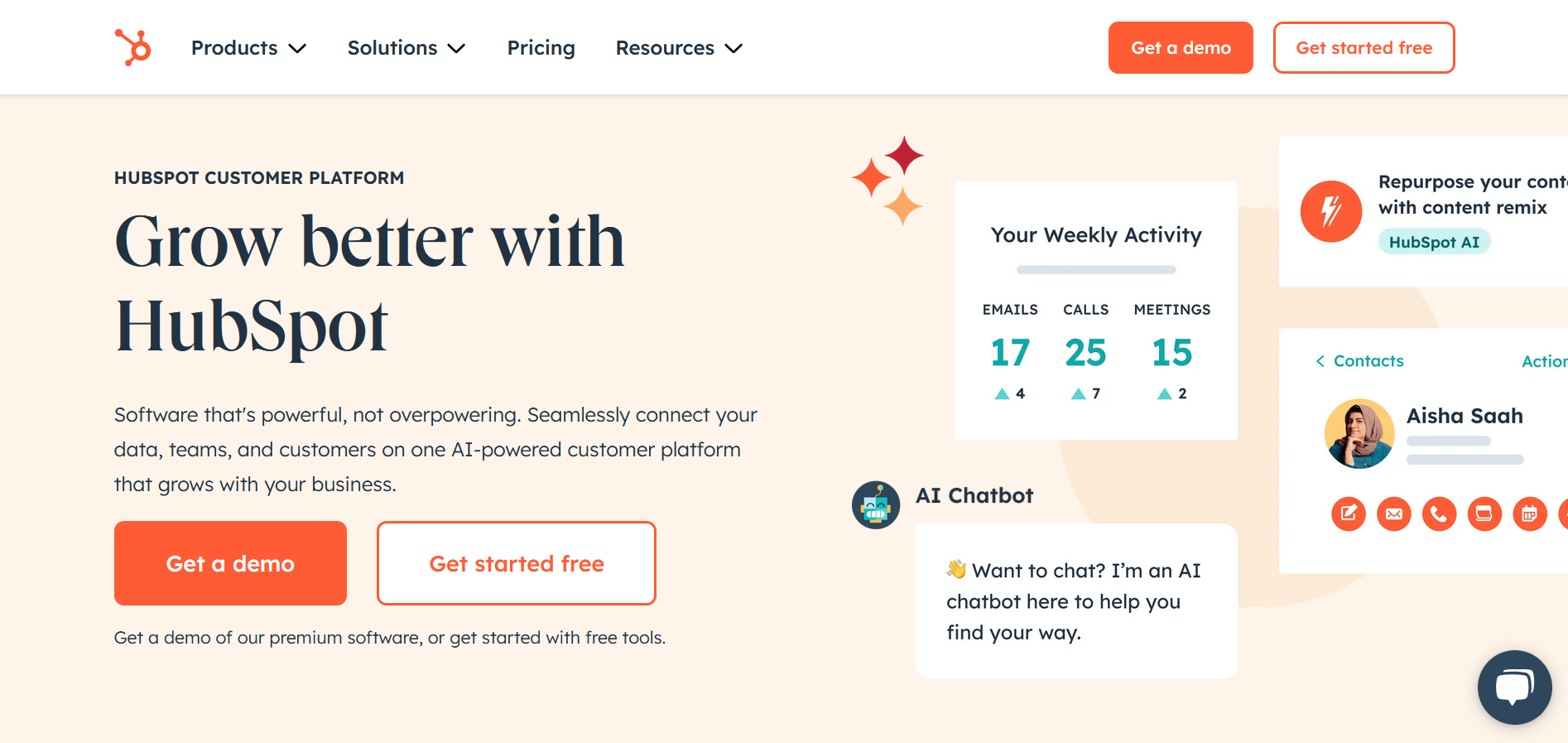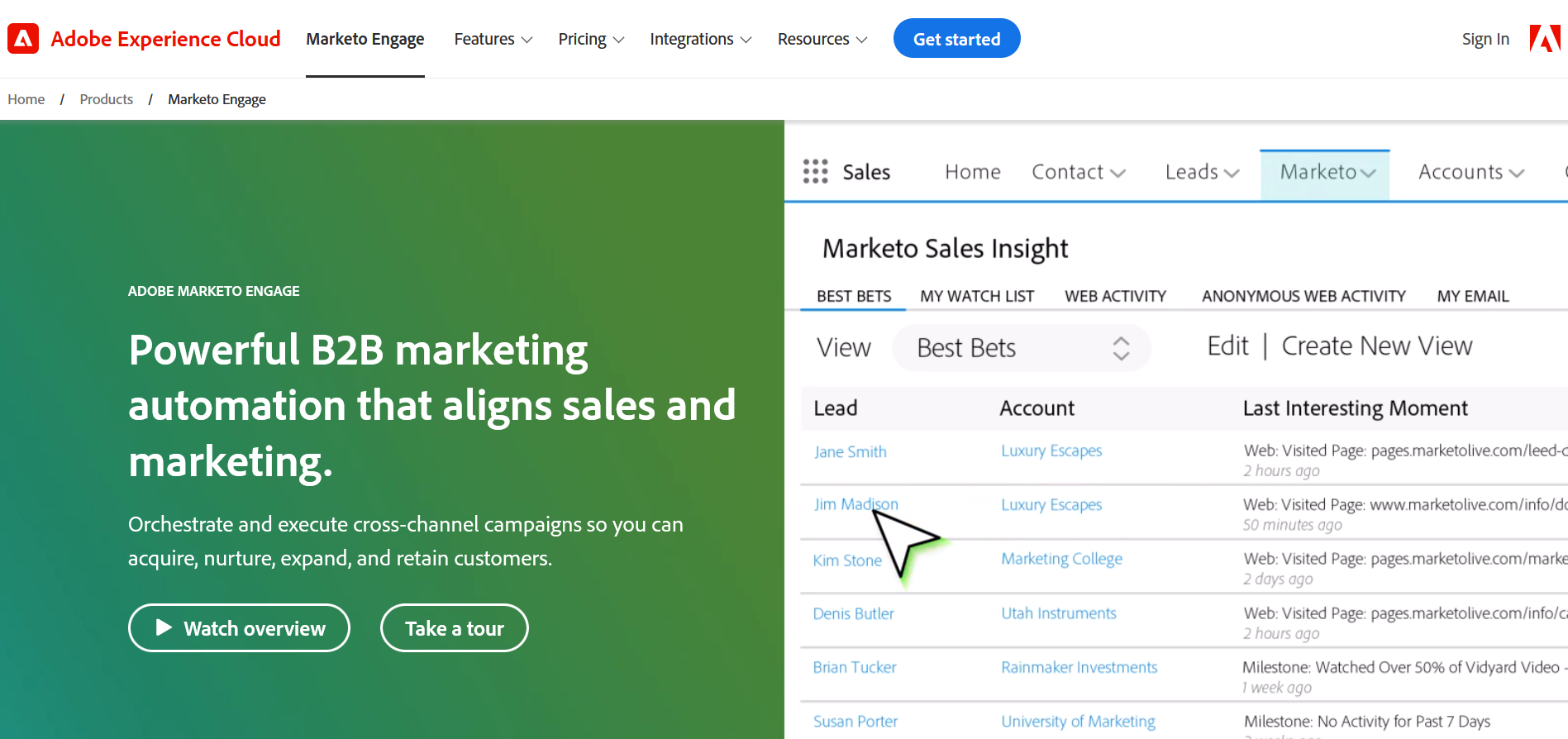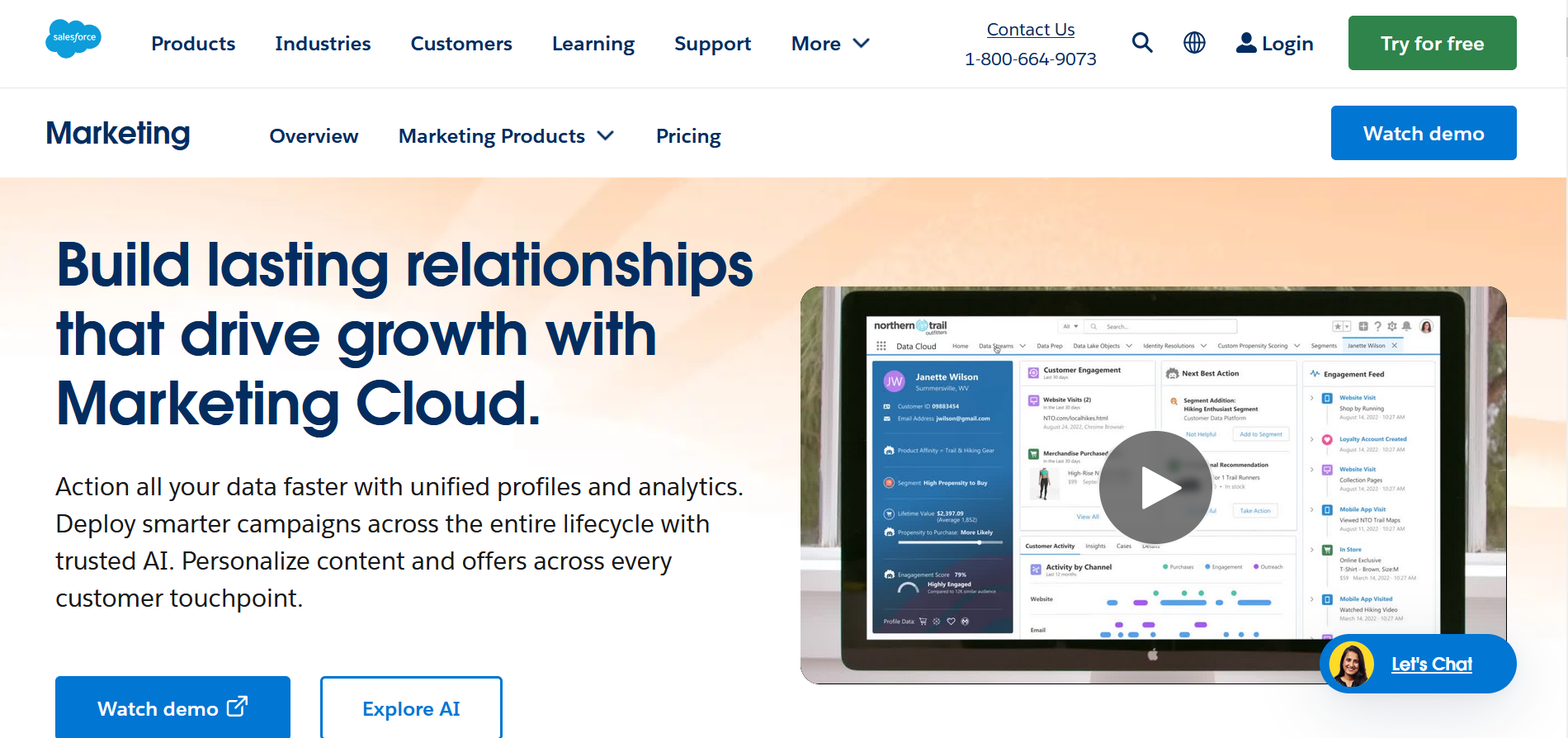Steadily growing competition forces businesses to continuously improve traditional strategies for creating, promoting, and selling products. In this article, we will talk about one of the current marketing trends today, the concept of which appeared in the mid-20th century. You will learn what multichannel marketing is, what it consists of, what practices and tools it includes, as well as what challenges it faces and how to overcome them.
Understanding Multichannel Marketing
Multichannel marketing is the promotion of goods and services through a combination of a number of direct and indirect channels of interaction with the audience. This strategy involves brands using as many communication methods as possible, including both online and offline tools. Among the most effective today are mailings, push notifications, social networks, corporate websites and online stores, instant messengers, marketplaces, and campaigns in advertising networks. No less in demand are mobile applications, offline stores, product catalogs, online forums and communities, outdoor advertising, and advertising in the media.
An multichannel strategy gives brands maximum visibility to consumers by promoting products literally everywhere they can be seen and purchased. The main advantage of such marketing is expanded audience coverage. However, this is far from the only reason for its high popularity. According to marketers, “multichannel” customers spend significantly more than “single-channel” customers — about 3–4 times. Another important advantage of this strategy is flexibility. It makes it accessible to advertisers with different goals and budgets.


Omnichannel Marketing vs. Multichannel Marketing
Multichannel and omnichannel approaches to interaction with customers in marketing are united only by the number of channels for communicating with them. Both involve the use of several: for example, email newsletters, social networks, marketplaces, and physical stores.
Multichannel marketing involves the autonomous functioning of each channel. This means that a customer can receive a different experience and level of service while in an offline store, viewing a page on a social network, or opening an email newsletter. Omnichannel marketing, in turn, strives to create a single, integrated experience for the customer. It provides a seamless and consistent experience by synchronizing customer information and preferences across all channels involved.
Multichannel vs omnichannel marketing: which one to choose? The choice depends on the company’s goals, resources, and the specifics of the target audience. An omnichannel approach requires greater integration and data management. At the same time, it provides more opportunities to form long-term relationships with clients.
Algorithm of a Successful Multichannel Strategy
Now that you know the multichannel marketing definition and have a general understanding of it, you can move on to consider the key stages of this strategy. Its development requires compliance with the following algorithm:
- Using brand guidelines. In a highly competitive environment, strong branding will help retain existing customers and attract new ones. The basis of competent brand positioning is a precisely formulated mission and a set of values that help it occupy its niche in the market. For multichannel campaigns to be successful, brand guidelines must be defined and strictly followed across all channels of interaction with the audience.
- Setting up analytics. Collecting and processing data on audience behavior, demographics, and other parameters is key to multichannel marketing. This data allows you to create a personalized marketing strategy and achieve the desired result. To analyze customer information obtained from various sources, companies should use specialized tools.
- Audience research. It is important to develop detailed customer profiles that include their interests, behavior, and demographic characteristics. This makes it possible not only to more accurately select content, but also to choose the most suitable channels for each specific audience. Correctly identifying the common interests of audiences across different channels allows you to effectively integrate these channels into a marketing campaign, providing a unified communication field.
- Selection of tools. Specialized platforms for multichannel marketing provide a solid set of necessary tools. They have functionality for campaign management, predictive analytics, and marketing attribution analysis. In addition, such services make it possible to use inbound and outbound marketing approaches in your campaign.
- Evaluation of results. Once your multichannel campaign is complete, you need to carefully evaluate its performance. This will help you understand which of the channels used were more and less effective, and which had a significant impact on the final result. A comprehensive assessment will provide an opportunity to measure the return on investment and gain valuable insights.
Technological Tools and Software for Multichannel Marketing
To successfully implement a multichannel strategy, you will need a multichannel marketing platform. This is a service that has software tools and technologies that allow you to flexibly develop and manage multichannel campaigns. It must contain the following components:
- Campaign management. Functionality for audience segmentation, creating workflows, managing individual channels, and campaign stages.
- Advanced analytics. Tools for predictive analytics and campaign optimization.
- Extended execution. Capabilities for content management, event management, and real-time decision-making.
- Response attribution. Optimization of a set of marketing channels, scenario planning, and attribution analysis.
- Digital marketing. Implementation of online promotion channels, including email newsletters, online stores, push notifications, paid advertising, social networks, and podcasts.
Among the most popular software solutions for multichannel marketing automation today are HubSpot, Marketo, and Salesforce Marketing Cloud. We invite you to familiarize yourself with them.
HubSpot

HubSpot is a comprehensive platform for managing marketing, sales, and customer service. It supports multichannel marketing, including email, social media, and content marketing. The service is used worldwide to manage marketing campaigns, CRM, analytics, and process automation. It is best suited for small and medium-sized businesses, as well as large companies looking to optimize their marketing efforts. The main functions are represented by contact management, marketing automation, content management, analytical tools, and integration with other systems. HubSpot's advantages include an intuitive interface, powerful analytical capabilities, and extensive functionality. With flexibility and scalability, HubSpot allows companies to adapt to changing market needs.
Marketo

Marketo is a leading marketing automation platform that provides tools for campaign management, customer acquisition, and analytics. It supports multichannel marketing, including email, social media, website, and mobile channels. The service is used mainly by medium and large businesses, especially in the B2B sector. The main functions are represented by email automation, lead management, building customer journeys, and integration with CRM systems. Marketo benefits from powerful segmentation and personalization tools, the ability to track customer behavior, and integration with a wide range of other marketing tools. Its intuitive interface and user support make it an excellent choice for those looking to improve the effectiveness of their marketing strategies.
Salesforce Marketing Cloud

Salesforce Marketing Cloud is a powerful platform for customer experience management and marketing automation. It supports multichannel marketing, allowing companies to effectively interact with customers through email, mobile apps, social media, and websites. The service is widely used in various industries, including retail, finance, and healthcare. It is suitable for companies of any size that want to improve customer interactions across multiple channels. The main functions include campaign management, analytical tools, marketing automation, and content personalization. The main advantages are a high degree of customization, deep analytics, and the ability to integrate with other Salesforce products. Thanks to its cloud-based architecture, this platform ensures reliability and availability at any time from anywhere in the world.
Best Practices in Multichannel Marketing
Well, enough of theorizing. Let's move on to practice. You're probably itching to learn about the best multichannel marketing trends and ways to get the most out of your campaigns. The most effective are:
- Increasing the subscriber base across channels.
- Surveying customers about their preferred channels.
- Audience segmentation for successful targeting.
- Defining goals and conversions to analyze campaign effectiveness.
Increasing the subscriber base by channel
Think about how you can increase the number of subscribers in your chosen promotion channels. For example, you have a large database of email addresses that can be used for other marketing tools. You may have ready-made scripts for how customers interact with your brand, either in person or online. Other options include having an impressive base of leads from social networks and paid advertising.
Case: Starbucks uses a loyalty program that attracts subscribers through a mobile application and social networks. Users earn points on purchases, which they can redeem for free drinks and discounts, encouraging activity and brand loyalty.
Surveying customers about their preferred channels
Survey your audience on which communication channels are most convenient for them. Enter the information received into a database (CRM, CDP, or some other) and use it as a guide when preparing future multichannel campaigns.
Case: LEGO conducted a survey among its customers to determine their preferred communication channels. The results showed a high interest in email newsletters with exclusive content about new sets and special offers. This allowed the company to target its marketing efforts more effectively.
Audience segmentation for successful targeting
Segmentation is one of the most powerful marketing tools that can help you deliver more targeted and personalized content to your customers. It can significantly increase conversions and enhance the return on investment in advertising and marketing. The data collected helps you flexibly customize your targeting, highlighting the most suitable audience for multichannel marketing campaigns or channels.
Case: Amazon uses segmentation to personalize product recommendations in email campaigns and on the website. Using data about previous purchases and user behavior on the site, the company offers products that are most likely to interest each specific customer. Thus, it significantly increases sales efficiency.
Defining goals and conversions to analyze campaign performance
Pay special attention to determining your campaign's conversion rate, as it has a significant impact on your overall analysis of your campaign's performance and goals. In the case of single-channel campaigns, this value is calculated quite simply. Conversion is calculated as a purchase, and all you need to do is match your marketing spend to the revenue generated and then compare the results to your original goal. However, if you are running a multichannel campaign, it will be much more difficult to attribute results to each individual channel. It's also worth considering how you'll calculate the monetary value of conversion and relate it to promotional spend for ROI analysis.
Case: Nike launched a multichannel marketing campaign to promote a new line of sneakers aimed at young people. The main goals of the campaign were to increase sales in retail and online stores, increase the number of subscribers on social networks, and increase interaction with the brand through the mobile application. The key channels were email marketing, social media advertising, contextual advertising, and sponsorship events. To measure the campaign's effectiveness, Nike used different types of conversions: sales, app registrations, and email newsletter subscriptions. Data analysis allowed to evaluate the return on investment (ROI) for each channel, identify the impact of interaction through different channels on buyer behavior, and assess the overall effectiveness of the campaign.


Challenges and Ways to Overcome Them
Despite the fact that a multichannel marketing strategy has a number of significant advantages, in the process of its implementation, you may encounter difficult challenges. It is important to know how to deal with them in advance.
The main disadvantages of the strategy and ways to neutralize them:
- Inconsistency. Each channel has its own characteristics and specifics of promotion, which can complicate the overall coordination of the campaign. Unified guidelines and software tools for centralized data storage will help solve this problem.
- Difficulties in assessing results. One of the main obstacles to successful omnichannel marketing is the difficulty in measuring a number of key campaign metrics: brand reach, engagement rates, consistency, etc. It is often difficult to determine which channel or touchpoint caused the trigger action. This challenge can be resolved through more thorough and in-depth work with data using professional analytics systems.
- Lack of technology coordination. An equally pressing problem for multichannel marketing is the inconsistency of technologies. Different channels can vary significantly in their technology requirements and the assets they offer. This often makes it difficult to coordinate technologies to provide the required level of support for all channels used.
Conclusions
Multichannel marketing is one of the most effective and popular promotion methods. It provides a good combination of cost-effectiveness and flexibility, allowing brands to use the channels available to them individually in any quantity or combination. However, it has some disadvantages regarding channel coordination, technology harmonization, and data synchronization.
More and more companies are moving from multichannel to omnichannel marketing. The latter eliminates barriers between channels by storing data about customer actions across all channels and at all stages of their interaction with the brand. With its help, a business receives more information about its target audience and better understands their behavior and preferences. The only disadvantage of omnichannel marketing is the higher costs of its implementation.
